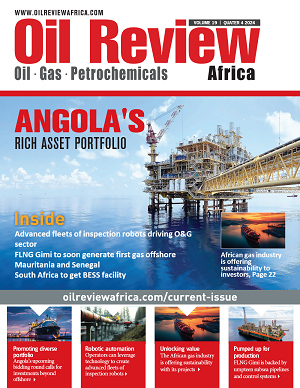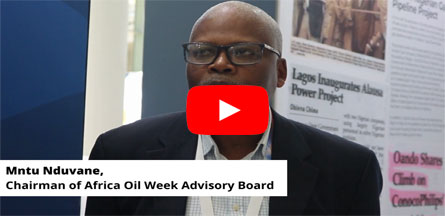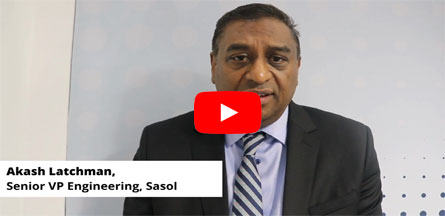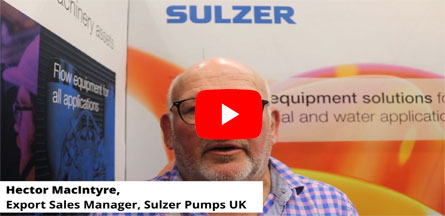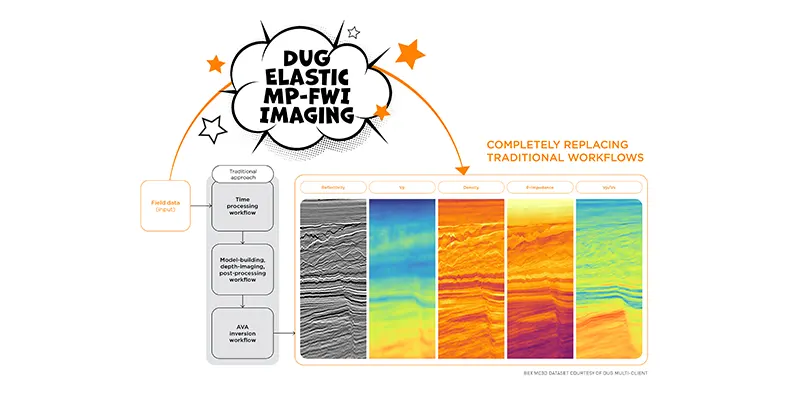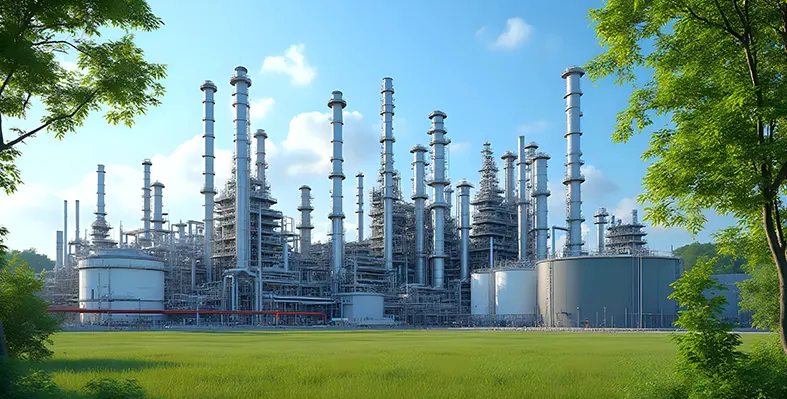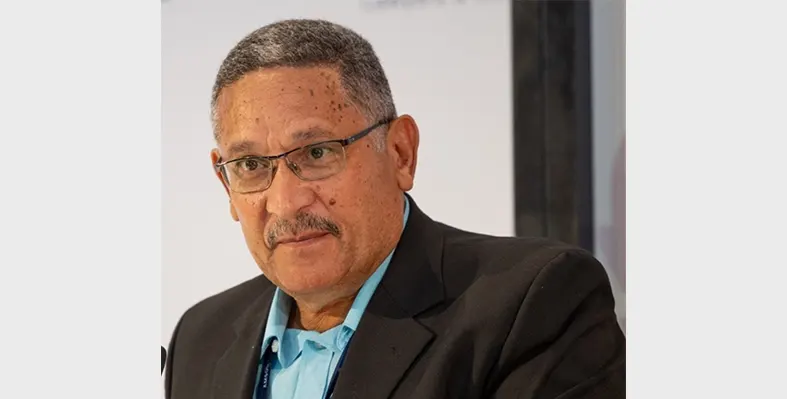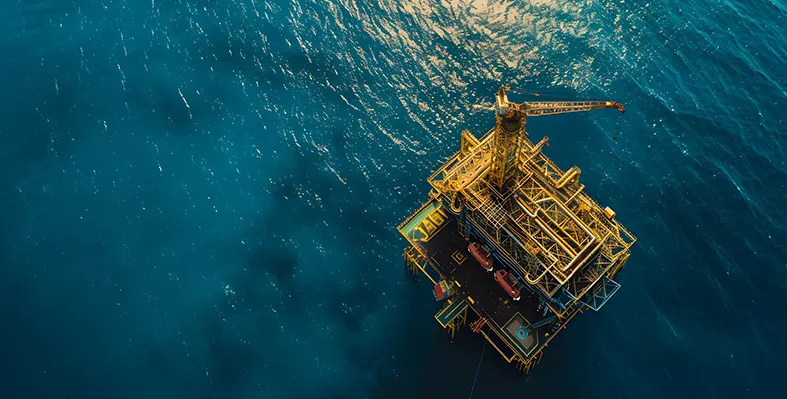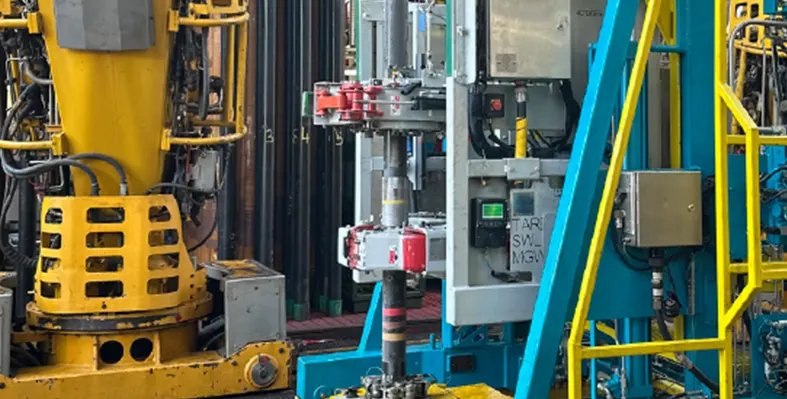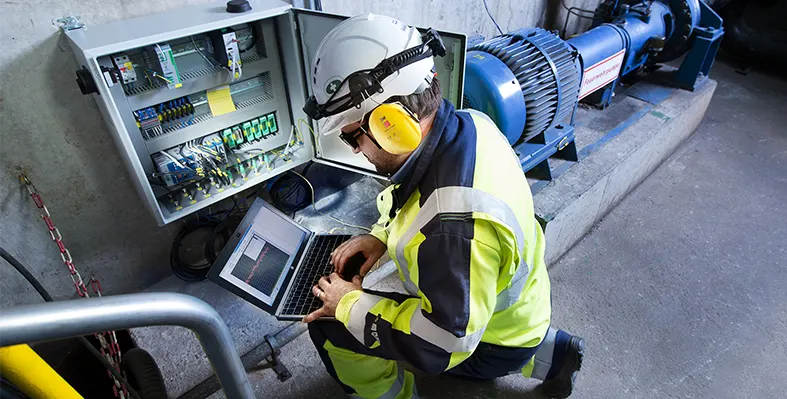In The Spotlight
PetroNor E&P ASA has generated an average of 4,240 bopd net working interest production from its operations in the PNGF Sud field complex in Congo in the second quarter
This stands against the 4,303 bopd in the previous quarter and 4,684 bopd in the second quarter of 2024.
The current yield at 90% is an improvement on the 2024 average of 86%. Two workover crews are pursuing reinstatement of idle production from wells in the workover queue.
In the first half of the year, the company restocked the significant overlift position and is currently building entitlement oil inventory in anticipation of a lifting and sale in the fourth quarter.
Rig Axima has arrived on location, and drilling operations have commenced for the announced fivewell infill programme in Tchibouela East. This is expected to add significant new production capacity during the second half of the year.
With an aim to boost Angola's national oil production, Etu Energias has initiated its redevelopment strategy at Block 2/05 in Soyo, Zaire Province, with the deployment of the SMS ESSA rig
The jack-up rig will initiate an intensive drilling campaign that includes the drilling of three development wells, one exploration well, and five workovers in existing wells.
Etu Energias is the operator of the block, in partnership with Poliedro, Kotoil, Falcon Oil and Prodoil. The campaign is aligned with the minimum work commitment agreed upon with Angolan authorities and is a key component of the broader strategy to increase production and unlock value from Block 2/05.
“The arrival and commissioning of the SMS rig represent a strategic investment in boosting Angola’s national crude oil production. This milestone reaffirms the growing technical and financial capacity of Etu Energias and its partners, and shows we are increasingly prepared to generate value and face the sector’s challenges with confidence,” said Edson R Dos Santos, chairman of the Board of Etu Energias.
The SMS ESSA rig was built at the COSCO Shipping Heavy Industry shipyards in 2020. A modern unit equipped to operate in water depths of up to 30 m, the rig boasts high-performance technical capabilities that ensure efficient and safe operations.
The Nigerian Upstream Petroleum Regulatory Commission was present at the 24th Nigerian Oil & Gas Energy Week in Abuja, highlighting the significance of the Petroleum Industry Act (PIA) in achieving investor transparency in the country's upstream sector
While delivering a presentation at NOG 2025, the Commission's chief executive, Gbenga Komolafe, explained how the PIA helped introduce strategic reforms, bring regulatory clarity and make investment inflows effective in the Nigerian industry.
The PIA, now implemented alongside President Bola Tinubu’s 2024 Executive Orders, ensures fiscal incentives, local content enhancement, and cost efficiency, so that investors can expect maximum transparency.
While the PIA establishes the legislative and regulatory foundation, the Executive Orders make sure the availability of competitive incentives, strengthening domestic participation, and improving operational timelines. These reforms, according to Komolafe, points towards Nigeria’s enthusiasm in welcoming innovation and investment in the upstream sector.
New investments amounting to US$16bn and initiatives such as the Project One Million Barrels to boost daily production to 2.5 mn barrels by 2026 will ensure energy security, resilience and environmental sustainability.
To achieve this the Commission has incorporated in the PIA framework key regulatory initiatives such as upstream digitisation, infrastructure expansion, and the implementation of transparent licensing systems aimed at enhancing efficiency, reducing costs, and restoring investor confidence.
Nigeria is aiming a gas-driven energy transition. The country has pledged to end routine gas flaring by 2030 and reduce methane emissions by 60% by 2031. He also announced the designation of 18 March as Nigeria’s official Upstream Decarbonisation Day, underscoring NUPRC’s commitment to climate aligned development, carbon markets, and emissions tracking.
Komolafe further warned that the Commission will continue strict enforcement of the Nigerian Gas Flare Commercialisation Programme (NGFCP), noting that regulatory action has already been taken against defaulting producers.
London, UK
Africa-focused upstream oil and gas company, Afentra plc, has reached a gross average production of 21,350 bopd for the first half of 2025
The company is on track with its multi-year redevelopment plan to boost recovery and production growth. The first half of the year saw continued ramp-up in water injection to reach an average of 35,000 barrels of water per day, so that a level of approximately 85,000 bwpd can be attained by the end of the year. The company, however, has recorded an excess of 100,000 bwpd of maximum injection rates in the first half of the year.
Afentra has reached enhanced production performance by conducting as many as 10 lightwell interventions. There was infrastructure upgrades across power systems, cranes, subsea lines and risers to enhance safety, reliability, uptime and protect future value.
The company is currently conducting platform surveys and access preparation so that rig mobilisation and drilling can be effectively achieved in 2026.
With the assurance of stable asset uptime, the company is on track to deliver US$180mn capital investment programme by the book.
The first half of 2025 also saw Afentra's acquisition of an additional 5% net interest in Block 3/05 and 6.67% net interest in Block 3/05A.
Another big highlight for the company during this period includes the onshore Kwanza basin growth plan. A risk service contract was initialed in the KON4 with operatorship and a 35% working interest. The blocks are known for its low-cost exploration potential, and one of them hosts the Quenguela Norte field, which is known to be the largest onshore discovery.
The Kwanza licenses are currently subjected to technical and operational workstreams, as historic well data are being reviewed and early-stage subsurface workshops conducted. An eFTG acquisition over KON15 and KON4 is now awaited by Q3 2025 to support future 2D seismic planning and subsurface evaluation before exploration, development, and appraisal opportunities can be identified over the next 18 months.
Afentra recorded an overall revenue of US$52.0mn. It has completed two crude oil liftings during the first half of the year, totalling to 0.7mn barrels, and expects lifting another five before the year ends.
"Afentra has continued to make strong progress in executing our value driven growth strategy, with the announced Etu transaction consolidating our position in Block 3/05 and the initialling of the KON4 RSC marking a further step forward in our onshore ambitions. The KON4 RSC marks an important step for Afentra, as it will be our first operated asset, a testament to our growing capabilities and a key step forward in our onshore ambitions. We continue to prioritise sound financial and risk management to ensure appropriate visibility on cash flow and the most recent cargo sale has moved Afentra into a strong net cash position. Combined with solid operational performance, material reserve replacement and strong asset cash generation, these milestones reinforce the strength of our portfolio and leave us well positioned to deliver further organic growth from our existing portfolio and pursue further value-accretive opportunities. The focus for the second half of the year will be continued operational progress across the portfolio and completion of the Etu and KON4 transactions as we continue to expand, diversify and strengthen Afentra's portfolio in Angola," said Paul McDade, chief executive officer, Afentra plc.
88 Energy Limited has secured license extension for 12 months from the Namibian Government, extending the PEL 93 First Renewal Exploration Period to 2 October 2026
During the extended period the company will aim datasets Integration to select drilling location, and complete an Environmental Impact Assessment (EIA) for drilling.
The PEL 93 is located in the Owambo Basin, onshore Namibia.
A farmout agreement with Monitor Exploration Limited for a joint venture gives 88 Energy Limited a 20% working interest in PEL 93. By way of an amendment on the agreement, the partners have introduced a new stage 1A work programme to target pre-drill de-risking.
The 2024 2D seismic data collected from an anticlinal structure -- Lead 9 -- spreading across 100 sq km has led to new insights to be unlocked from a gravity survey area. The partners have hence included on the programme a high-resolution gravity survey to focus on the southern area of PEL 93. The survey will be supplemented by radiometric data.
This anticipation has been strengthened by similar findings from the Kavango West 1X exploration well where ReconAfrica is now all set to start drilling this month.
Lead 9 is similar to Recon’s imminent Kavango West 1X well in that both show a very large and robust structural closure including the shallow clastic reservoirs, the deeper Otavi carbonate reservoir seen in Naingopo-1 and the deeper source rocks.
Monitor's statement read, “Our early results are pointing to something potentially significant in the southern area of PEL 93 in the Owambo Basin. With multiple datasets aligning and the prospect of even larger structures emerging, the Joint Venture is building momentum towards a drilling event and what could be a basin opening discovery with broad implications for all of Namibia given the significance in unlocking a major new hydrocarbon play.”
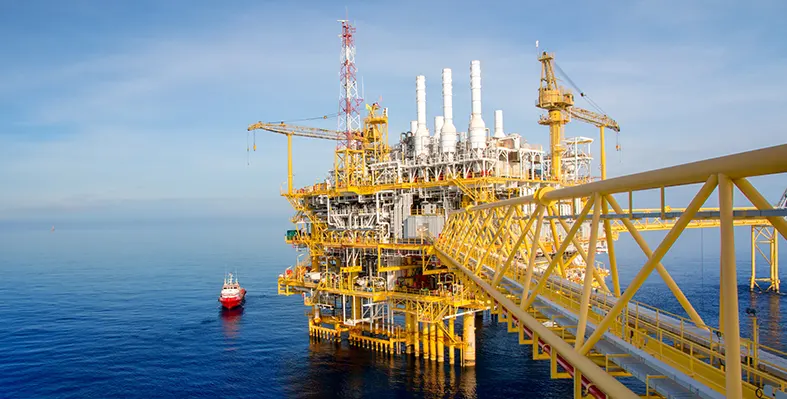
The project will involve the installation of compact twin-well configurations. (Image source: Adobe Stock)
The engineering, procurement, installation and commissioning work for Phase XI Deepwater Project of the West Delta Deep Marine (WDDM) concession has been vested on Petroleum Marine Services (PMS) by independent engineering consultancy Longitude Engineering
Longitude’s engineering scope comprises the detailed design of deep-water rigid jumpers, development of fabrication drawings, onshore and offshore handling procedures, offshore installation engineering, process and stress modelling, and key HSE studies and engineering workshops.
The Phase XI development of the Burullus gas field involves the tie-in of three subsea twin deep-water natural gas wells. The scope of work includes engineering, procurement, fabrication, installation, and commissioning support five subsea M-shape rigid jumpers, equipped with deep-water specialised connectors, multiphase gas meters, and sand detection systems.
Compact twin-well configurations will be installed, each with a subsea jumper span limited to approximately 25 meters in length. This will be placed in a brownfield environment adjacent to an existing live natural gas deep-water system, part of one of the largest deep-water natural gas networks globally.
A tie-in structure, namely “Tie-In Spool Base, TSB” designed to accommodate multiple jumpers within a single subsea module will offer enhanced production flexibility and enabling well allocation interchangeability.
Subsea control system components to support well operation and chemical injection.
Located approximately 90 kilometres offshore Egypt, in the north-western Nile Delta region of the Mediterranean Sea, the WDDM concession is operated by Shell through its joint venture, Burullus Gas Company. The area includes 17 gas fields at water depths ranging from 300 to 1,200 meters.
“We are delighted to secure this contract following the success of our previous work on Phase X. The West Delta Deep Marine development is of major significance to Egypt’s oil and gas sector, and we remain committed to delivering the highest quality of service to PMS and, ultimately, to the operator,” said Daniel McGowan, Offshore Project Director at Longitude Engineering.
Longitude Engineering provides specialised engineering, design, and analysis consultancy services across various markets, including renewables, maritime, oil and gas, and infrastructure. The company’s expertise spans concept selection, Pre-FEED and FEED studies, marine operations engineering, and vessel design.
The Lower Congo Basin offshore Angola that falls under the purview of Block 1/14, revealed commercial gas from the Gajajeira-01 exploration well for partners, including the National Agency of Petroleum, Gas and Biofuels, Azule Energy (35%), Equinor (30%), Sonangol E&P (25%) and Acrep SA (10%)
This is great news for ANGP as this lends the national oil and gas body a strong ground to advance domestic gas consumption while also boosting the petrochemical industry. "The new discoveries are a motivating factor in our commitment to attracting private investment in the sector for the development and monetisation of natural gas," said Paulino Jerónimo, chairman of the ANPG Board of Directors.
The well reached the discovery of gas- and condensate-bearing sandstones in one of the Lower Oligocene targets following drilling at a water depth of 95 meters and approximately 60 kilometers offshore. Advanced evaluation formations and control tools were used to assess reservoir quality and fluid characterestics during the drilling of the first section. As drilling continues at the Gajajeira-01 well, the last interval of the Lower Oligocene LO300 remains the next target.
The initial results and testings collected from fluid samples have pointed towards multiple reservoirs with good mobility. Going ahead with the project can lead to the finding of gas volumes worth more than 1 trillion cu/ft, with up to 100 mn barrels of associated condensate.
To top that, the findings indicate an underlying hydrocarbon system at large, suggesting grand opportunities for exploration for the Block 1/14 partners.
"This is a landmark moment for gas exploration in Angola. The Gajajeira-01 well is the first dedicated gas exploration well in the country, and its success reinforces our confidence in the potential of the Lower Congo Basin. We are proud to contribute to Angola's long-term energy development with a focus on sustainability and energy security," said Azule Energy's CEO, Adriano Mongini.
Mozambique’s state-owned oil company, Petromoc, has entered a strategic deal with a Nigerian energy firm called Aiteo to develop an oil refinery with a capacity to reach 240,000 barrels-per-day
The agreement is a two-way blessing as it not only attracts foreign investments for Mozambique in strategic sectors, but also pushes Aiteo to a further influential position as a local company beyond its Nigerian base.
Signed during a formal ceremony chaired by the Mozambican President Daniel Chapo, the agreement will advance energy independence for the country. It will boost fuel supply security, facilitating the construction of one of the largest refineries in southern Africa, and the Southern African Development Community (SADC).
The engineering procurement and construction activities for the refinery will be covered by an American firm called Deerfield Energy Services LLC. The refinery will be developed in a phased manner with an initial aim to install an 80,000 bpd processing unit within a two-year time frame, and gradually scaled up to the maximum capacity.
While the project promises several benefits, the financial, environmental compliance and execution timelines-based risks involved needs consideration. When ready for operation, the plant will be able to produce petrol, diesel, jet fuel and naptha for domestic as well as regional use.
Calling the project a 'milestone' for its employment generation possibilities, Ransome Owan, Aiteo's group managing director for infrastructure, said, “It will reduce import reliance, create jobs, and lay the foundation for Mozambique to become a leading hub in the region’s downstream energy sector.”
Mozambique is committed to an extensive industrial strategy to advance energy access, economic diversification, and infrastructure development. The refinery falls in line with this strategy as it will ensure greater access to cleaner fuels and advance clean cooking initiatives with the easy availability of liquefied petroleum gas (LPG) distribution.
As Africa is zooming in on brownfield sites for maximum oil recovery, artificial intelligence and machine learning technologies are fuelling the industry's optimisation goals
Redifining operational efficiency by extending field life and maximising output, AI is set to move the oil and gas industry at a US$6.4bn market value by 2030.
As major operators increasingly adopt AI, global oilfield technology companies like Baker Hughes, Halliburton or SLB have opened bases in Africa. SLB's technology is backing several billion-dollar oil projects in Angola, and has introduced the Africa Performance Centre in Luanda this year. It has a strong presence in other regions of Africa as well.
Repsol has several developments underway in Libya, Algeria and Morocco and strives to bolster production across these markets.
Enhanced oil recovery is currently witnessing a disruption as AI has unlocked access to large datasets which is unimaginable with traditional systems. This makes a huge difference for operators in taking the right decisions. With deep geological and production data in hand, reservoir management and pattern identification become much simpler.
AI is now way past the experimental stage, and is being adopted on a policy level as well. Many African countries are streamlining policy to support EOR at legacy assets. Angola, for example, implemented its Incremental Production Initiative in 2024 which offers tax incentives to encourage reinvestments in mature oilfields. Energy major ExxonMobil made the first discovery – the Likembe-01 well - as part of the initiative in 2024, demonstrating the role policy plays in unlocking incremental resources. The African Union Commission also declared AI as a strategic priority for the continent in May 2025, citing the role machine-learning plays in transforming the continent’s development trajectory.
These topics will drive conversations at the African Energy Week (AEW): Invest in African Energies 2025 that will be taking place from 29 September 29 to 3 October in Cape Town.












